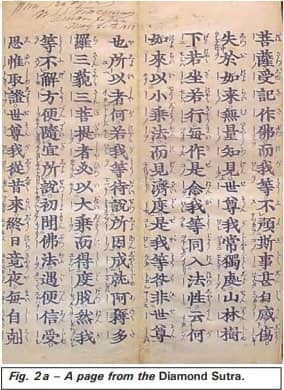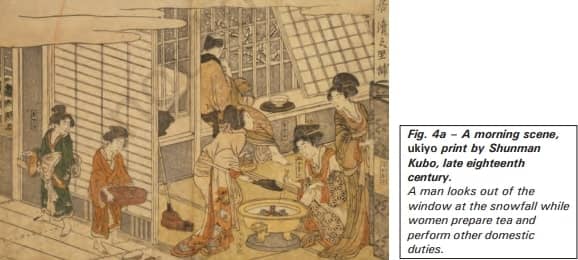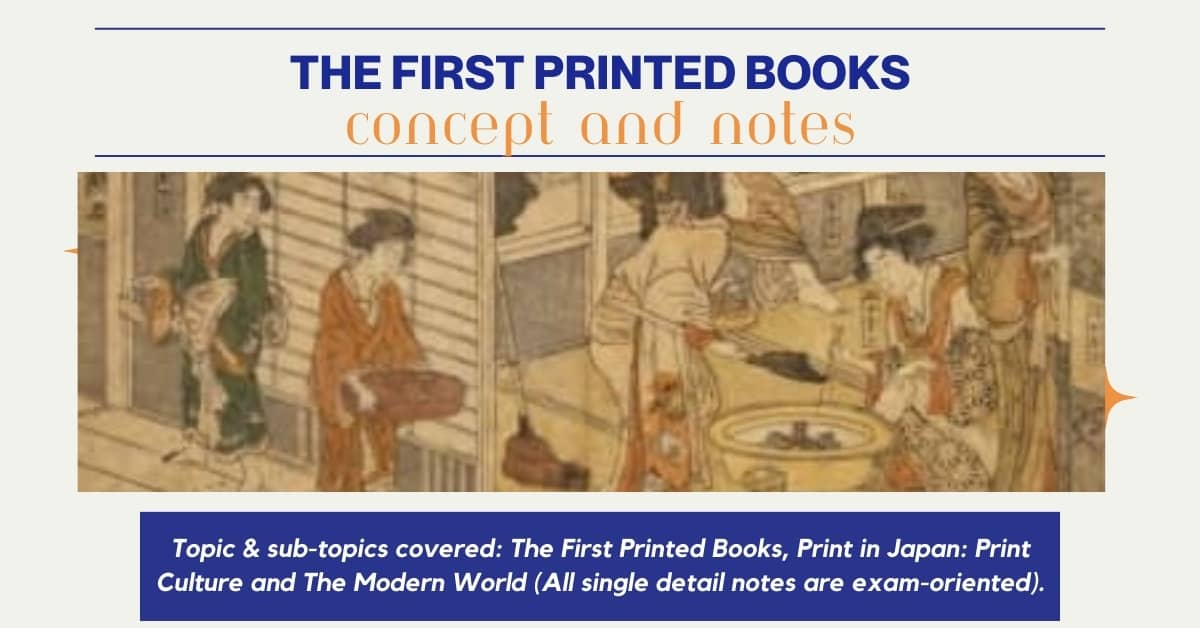NCERT History Class 10 | The First Printed Books – Concept and Notes
Topic & sub-topics covered: The First Printed Books, Print in Japan: Print Culture and The Modern World (All single detail notes are exam-oriented).
We have discussed in-depth and exam-oriented pointers that can be asked in the board exam of class 10th about “The First Printed Books, Print in Japan” which is taken from the NCERT History book for class 10th chapter no. 5 “Print Culture and The Modern World“.
Download NCERT History Chapter 5 Class 10th Notes PDF for “Print Culture and The Modern World”
If you are in class 10th and looking for free NCERT History chapter 5 notes of the chapter Print Culture and The Modern World class 10 that cover concepts, then you can download the free class 10th History chapter 5 notes “Print Culture and The Modern World”. You should download this free PDF for future test or exam preparations.
NCERT Class 10 History Chapter 5 Print Culture And The Modern World Class 10th Notes & Concept
The First Printed Books

1. Early Print Technology in East Asia:
- Originated in China, Japan, and Korea.
- The hand printing method was developed initially.
2. Chinese Woodblock Printing:
- Introduced around AD 594 in China.
- Involved rubbing paper against inked woodblocks.
- Traditionally used for printing books.
3. Chinese ‘Accordion Book’:
- Utilized due to the inability to print both sides of thin paper.
- Pages folded and stitched at the side.
4. Imperial State’s Role in Printing:
- China’s imperial state was a major producer of printed materials.
- Sponsored printing of textbooks for civil service examinations.
5. Diversification of Print Usage:
- By the 17th century, print usage expanded beyond scholar-officials.
- Merchants utilized print for trade information.
- Reading became a leisure activity for a broader audience.
6. Emergence of New Reading Culture:
- Preferred literary genres included fiction, poetry, autobiographies, and plays.
- Women began reading and publishing their works.
7. Introduction of Western Printing Techniques:
- Imported in the late 19th century.
- Mechanical presses replaced traditional hand printing.
- Shanghai became a centre for the new print culture.
8. Transition to Mechanical Printing:
- The shift from hand printing to mechanical printing occurred gradually.
- Western-style schools in China contributed to the adoption of mechanical presses.
Print in Japan

1. Introduction of Hand-Printing in Japan:
- Buddhist missionaries from China introduced hand-printing technology around AD 768-770.
- The oldest Japanese book, the Buddhist Diamond Sutra, was printed in AD 868.
2. Usage of Printed Material:
- Pictures were printed on textiles, playing cards, and paper money.
- Books in medieval Japan were cheap and abundant, with poets and prose writers regularly published.
3. Visual Material in Publishing Practices:
- Visual material led to diverse publishing practices.
- Late 18th-century Edo depicted an elegant urban culture through illustrated collections of paintings.
4. Content of Hand-Printed Material:
- Libraries and bookstores offered various types of hand-printed material:
- Books on women, musical instruments, calculations, tea ceremony, etc.
- Topics included flower arrangements, proper etiquette, cooking, and famous places.
5. Urban Circles in Edo (Tokyo):
- Flourishing urban circles in Edo showcased an elegant culture.
- Illustrations depicted artists, courtesans, and teahouse gatherings.
Next & Previous Topics of NCERT/CBSE History Class 10 Chapter 5: Print Culture and the Modern World
FAQ
Q1. What is the significance of Chinese woodblock printing?
Answer: Chinese woodblock printing, dating back to AD 594, revolutionized book production by using inked woodblocks for mass printing, primarily for textbooks and civil service exam materials.
Q2. How did the introduction of Western printing techniques impact China?
Answer: In the late 19th century, Western printing techniques were imported, leading to the gradual shift from hand printing to mechanical presses. This transition was accelerated by the establishment of Western-style schools, particularly in Shanghai.
Q3. How did the introduction of hand-printing technology affect Japan?
Answer: Buddhist missionaries from China introduced hand-printing technology to Japan around AD 768-770. This innovation led to the printing of the oldest Japanese book, the Buddhist Diamond Sutra, in AD 868, marking the beginning of Japan’s rich printing history.

